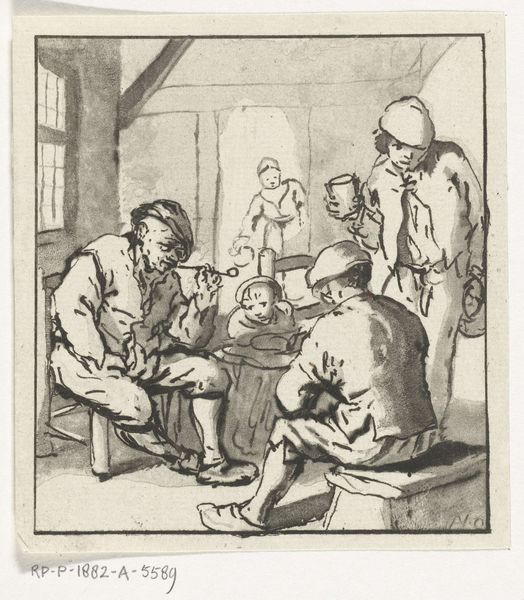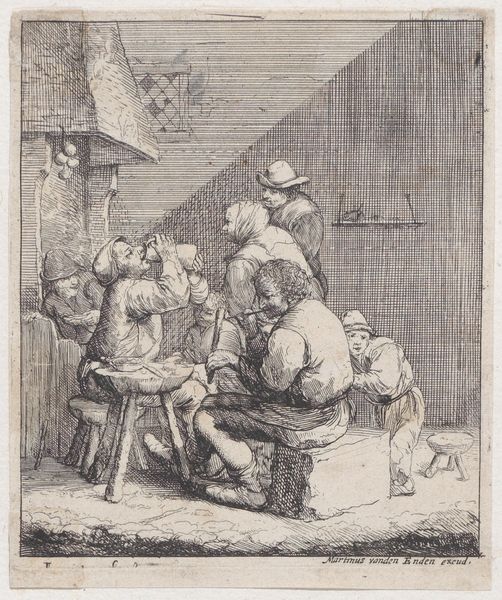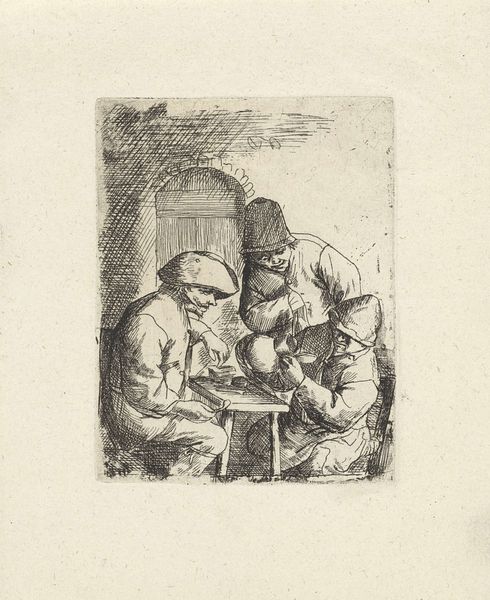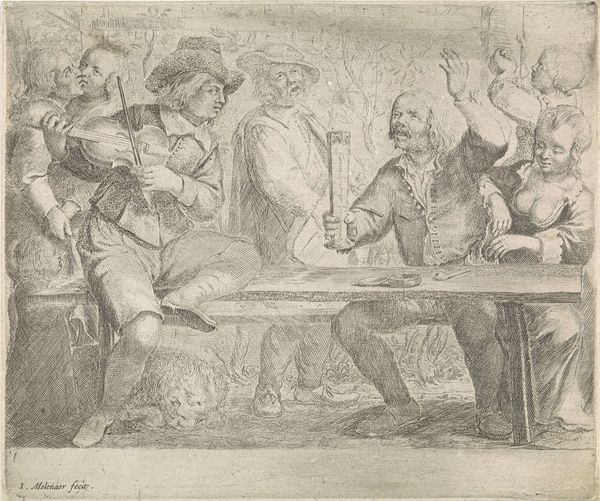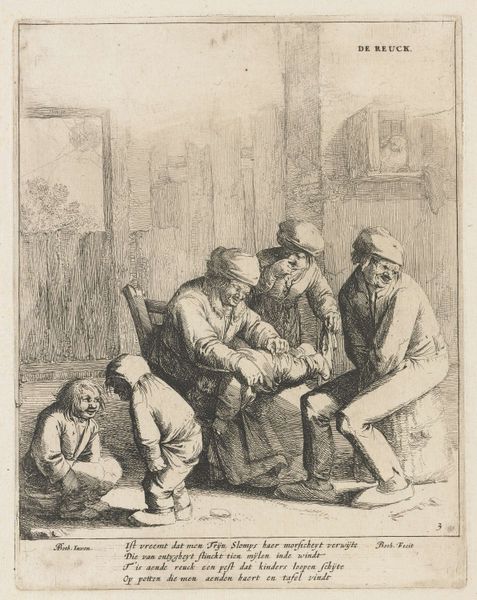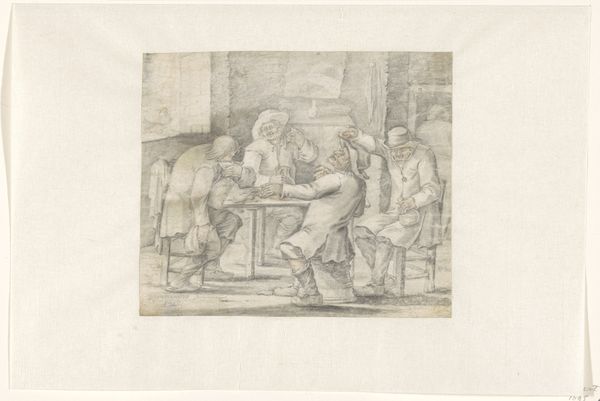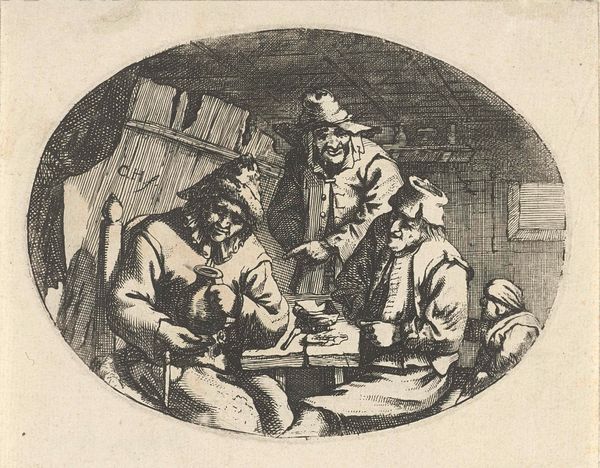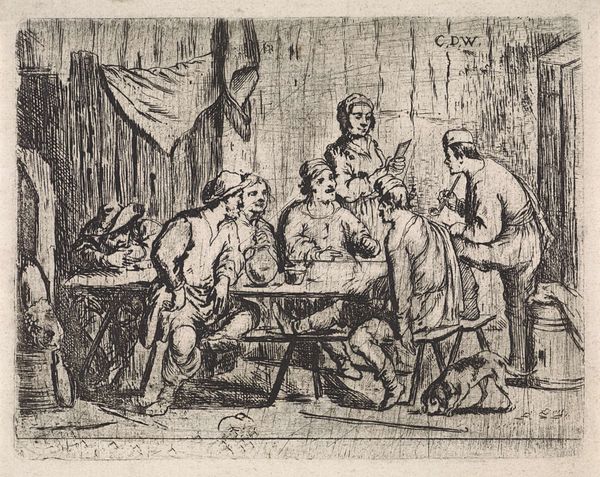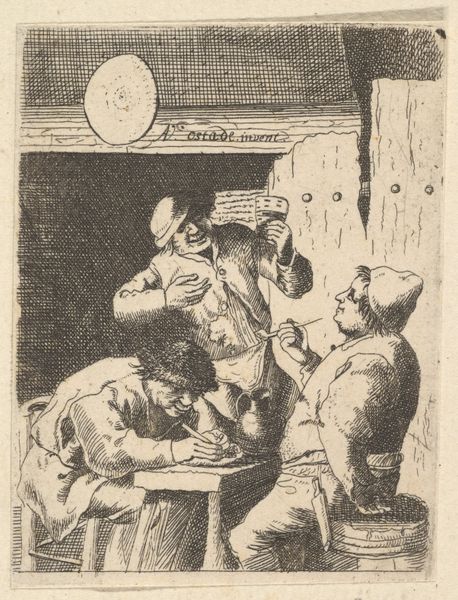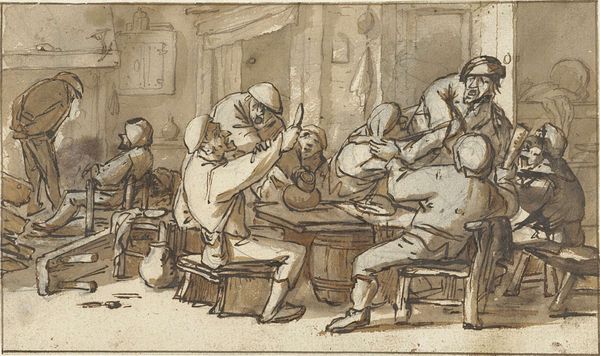
drawing, print, etching
#
drawing
#
dutch-golden-age
# print
#
etching
#
figuration
#
group-portraits
#
genre-painting
Dimensions: height 109 mm, width 109 mm
Copyright: Rijks Museum: Open Domain
Curator: Here we have "Four Peasants in an Interior" by Arnold Houbraken, created sometime between 1670 and 1719. It’s an etching and print. Editor: My first impression is the cramped feeling of this interior—the composition almost seems to box in these figures. And the lack of light gives it a slightly melancholic feel. Curator: Right. Looking closely at the way Houbraken used etching to create depth, it becomes clear how meticulous the printing process would have been. Each line serves a purpose, whether it's defining the rough texture of the peasants' clothing or the grain of the wooden table. The paper used probably wasn’t of the highest quality, reflecting the subject matter's accessibility. Editor: Indeed. Houbraken portrays a candid moment of everyday life. One might even view it through the lens of labor and class – capturing the leisure time (if we can call it that) of those involved in agricultural work. The dim setting perhaps echoes their social positioning and access to resources. It is a reminder that we must view art through the realities of social structures, reflecting how race, gender, class, and other identifiers shape people's lives and opportunities. Curator: The material conditions dictated the subject of art, just as the demand for certain types of prints impacted the kind of stories artists chose to tell. Consider how prints and drawings enabled stories from different levels of society to circulate beyond elite circles, finding their audiences based on affordability and replicability. Editor: I'm struck by how Houbraken's attention to detail subtly elevates this scene, reminding us that artistry and craftsmanship can lend dignity even to mundane moments of working-class existence. It shows an interesting approach in depicting labor not as mere toil but an integrated part of life's social fabric. Curator: Looking at it, the etching brings to life what would be quite raw and unsophisticated conditions. Thinking about how such pieces helped circulate images of different lifestyles amongst the wider populace reveals an insight into cultural exchange. Editor: Well, this piece reminds me that history and social commentary can emerge in the most unadorned of settings, giving voices to the marginalized, showing that the artwork and the social history of that epoch are completely entwined.
Comments
No comments
Be the first to comment and join the conversation on the ultimate creative platform.
